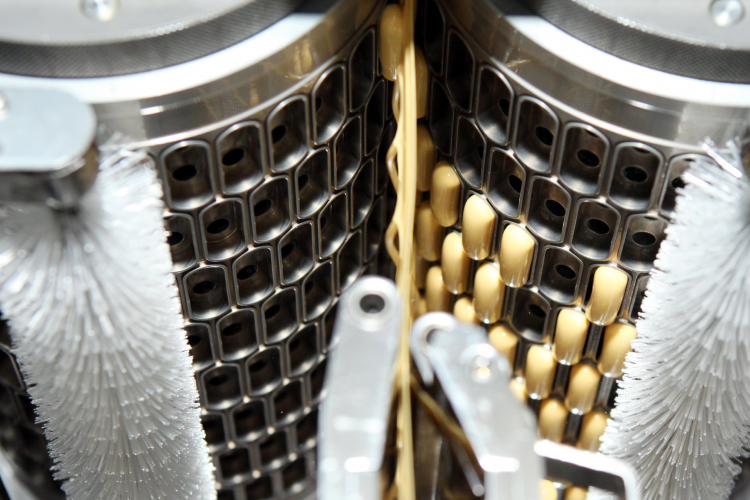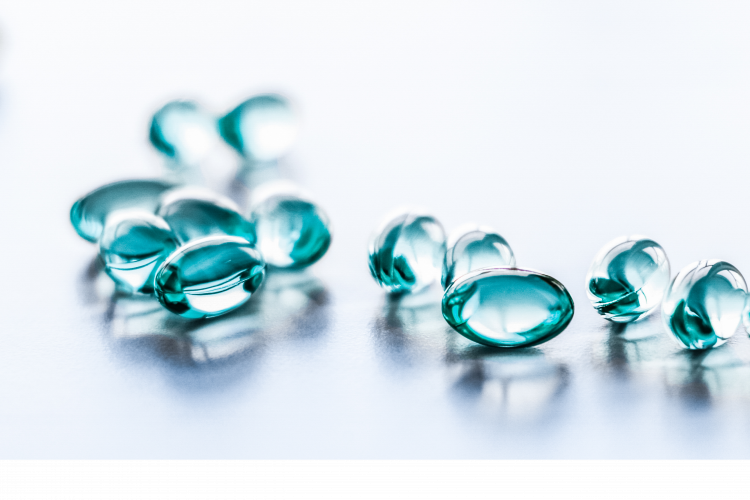
The brief history of gelatin in soft caps: Why is it still the leading choice for manufacturers?
Since the early part of the 19th century, gelatin has been the leading choice for manufacturers creating soft capsules thanks to its unique molecular structure. Gelatin-based soft capsules make liquid medicines easier to ingest as well as masking their taste – and advances in science continue to inspire exciting new developments.
Founded in 1900, PB Leiner has always thrived on innovation. We have a forward-thinking approach that drives us to explore new possibilities for gelatin as a biocompatible material for the pharmaceutical industry. At the same time, we also value gelatin’s history.
Here, we look at two important milestones from the 19th and 20th centuries as well as provide insights into how PB Leiner is driving innovation in the 21st century.
1833: “Bladders made of gelatin”
The pharmacist Joseph Gérard Auguste Dublanc and his student François Achille Barnabe Mothes filed the first patent for a capsule in 1833. Their invention consisted of “bladders made of gelatin” – produced by dipping a gelatin solution into a small leather bag filled with mercury. The empty capsule form was filled with liquid-based medicines introduced by a pipette and then sealed with a drop of gelatin. Their invention addressed an essential drug delivery need and earned worldwide recognition. Mothes ended his collaboration with Dublanc a few years later, but he continued to devise improvements to gelatin capsules as well as taking out further patents for their manufacture and use.1
1930: The rotary die machine revolutionizes the soft-gelatin encapsulation field

A young and visionary chemical engineer revolutionized the soft-gelatin encapsulation field in 1930. Robert Pauli Scherer used the basement of his parents’ Detroit home to design a rotary die encapsulation machine, providing a cost-effective manufacturing method that also delivered accurate dosages. The invention was patented in 19312, and in 1933 he founded the Gelatin Products Company, which became the R.P. Scherer Corporation in 1947. His company turned into the world's largest producer of soft gelatin capsules by 1984. In 1998, the company became part of an organization known today as Catalent Pharma Solutions3,4.
Solving today’s biggest challenges

Nearly two centuries after the first capsule was patented, gelatin remains the excipient of choice across the industry.
As the science has advanced, expectations have risen and excipients are now seen as vehicles that can provide better functionality for active pharmaceutical ingredients (APIs). Gelatin’s exceptional film-forming properties provide advantages including biocompatibility and excellent machinability. Even so, two main challenges remain in the 21st century:
1. Delayed dissolution of soft capsules: APIs now increasingly feature large molecules and biosimilars. This can trigger interchain reactions, causing an insoluble gelatin film to form between the capsule shell and filling. This can reduce bioavailability as a result of the delayed dissolution of the capsule and release of the API.
2. Drying of capsules: The drying process is an important step in the manufacturing of soft capsules that can lead to production bottlenecks. Complex formulations containing hydrophilic fillers can contribute dramatically to this problem, further reducing productivity.

Our gelwoRx™ product family has been created to resolve these two key challenges. gelwoRx™ Dsolve is our solution to deliver the fast and stable release of APIs. It prevents the interchain crosslinking of gelatin molecules, resulting in an improved capsule quality in terms of both bioavailability and shelf life. gelwoRx™ Dhydra, meanwhile, was created to improve drying times and significantly outperforms the gold standard used in soft capsules. It enables soft capsules to dry between 20% and 50% faster, bringing increased process efficiency and better viscosity stability.
These pure and natural encapsulation products do not feature any additives or chemical modification, and they are 100% biocompatible. Suitable for use as new drug delivery systems, the gelwoRx™ product family is designed to provide solutions for the challenging APIs of the 21st century.
References
[1] L. Augsburger and S. W. Hoag, Eds., Pharmaceutical Dosage Forms: Capsules. Routledge - Taylor & Francis Group, 2018.
[2] R. P. SCHERER, “Method of and apparatus for making capsules,” US1970396A, 1931.
[3] People Pill, “ROBERT-PAULI-SCHERER: American Inventor and businessman,” 2021. https://peoplepill.com/people/robert-pauli-scherer (accessed Aug. 09, 2021).
[4] Detroit Historical Society, “ENCYCLOPEDIA OF DETROIT: SCHERER, ROBERT PAULI,” 2021. https://detroithistorical.org/learn/encyclopedia-of-detroit/scherer-robert-pauli (accessed Aug. 09, 2021).